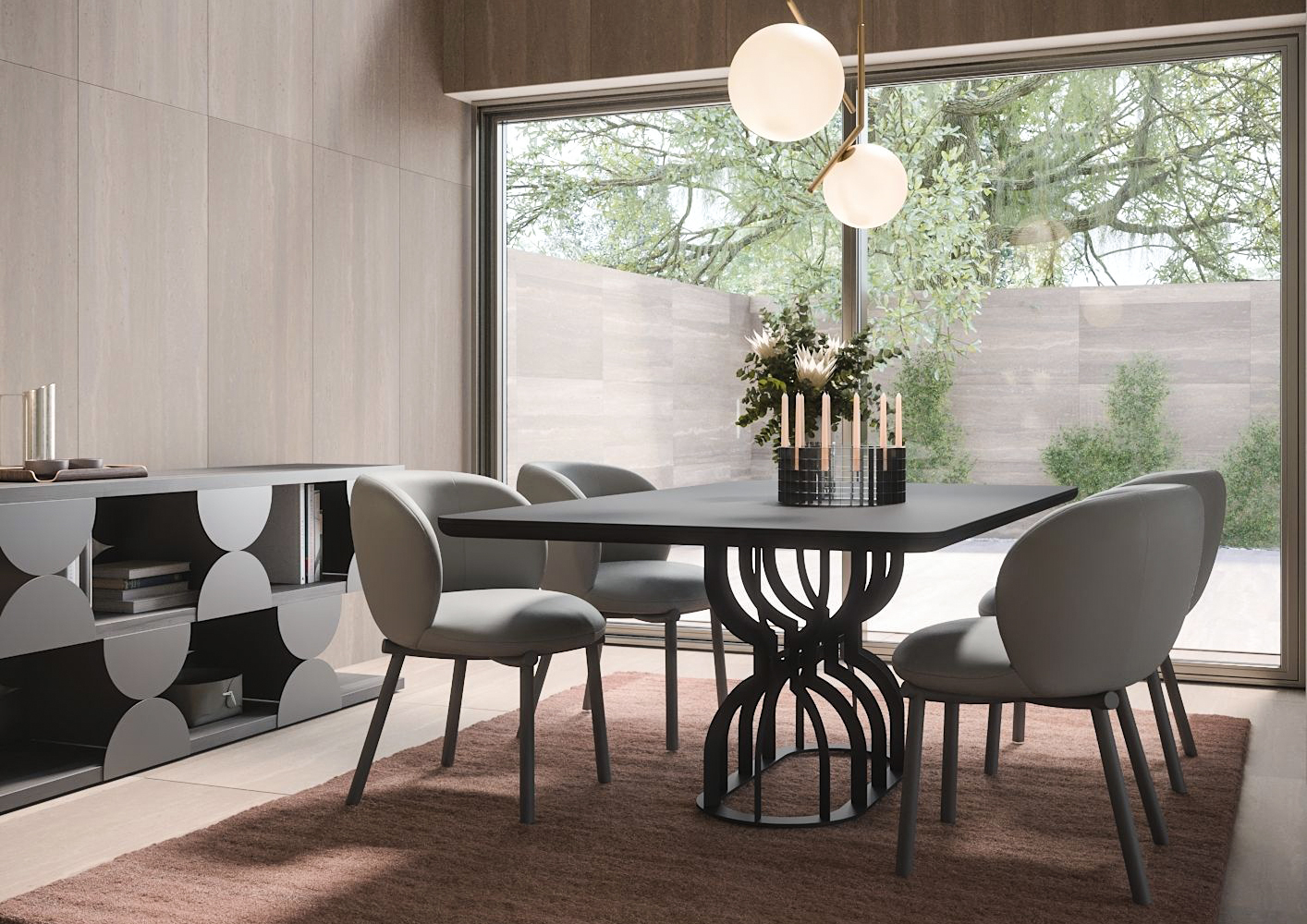
How to choose the right table for your kitchen
Choosing the right table is a delicate process that blends functional needs with personal aspirations and everyday habits. This means not only defining the aesthetic of the dining area, but also shaping its essence through dimensions, layout, and materials.
Table of contents
Defining style and position within the space
The first step is to read the room’s identity: the color palette, architecture, and surface textures suggest the aesthetic direction. The goal is to achieve visual harmony, where every kitchen component interacts with the others with elegance and consistency.
Within this system, the table’s position is crucial to ensure fluid movement and optimize space. It’s important to maintain adequate distance from walls and other kitchen furniture—approximately 80 cm from walls and 120 cm from other furniture—to guarantee comfortable seating and ease of passage.
Finally, installing a central light above the table is a functional necessity and a design element that defines the atmosphere. A warm, well-directed light invites conviviality, creates intimacy, and enhances the finishes and materials of the table surface.
Deciding on the shape
The shape of the table is a decision that balances hospitality and geometry, responding to two key requirements: the room’s dimensions and the usual number of diners.
- A rectangular table is suitable for long, narrow rooms, following the space’s linearity harmoniously. It’s the most common choice, proving practical for daily use and when hosting guests.
- A round table is ideal for square or compact rooms where fluidity of movement is a priority. Without corners, it makes the environment more welcoming and encourages conversation, though it may not accommodate many diners.
- An oval table combines the advantages of both main shapes, promoting interaction like a round table while offering similar capacity to a rectangular one.
- A square table is an option designed to manage interior volumes, especially in small, regular layouts.
The table thus becomes a direct expression of one’s personality, allowing the space to be adapted to current needs and expressing a lifestyle.
Opting for a table connected to the island
Integrating the table with the kitchen island is a dynamic solution in which preparation and dining phases merge into a single area. This configuration requires a precise overall vision, where the contrast between the island top and the table surface becomes a distinctive design element.
From a practical point of view, the proximity of storage units and the worktop reduces movement, making service phases more convenient. At the same time, the island invites participation: the cook remains at the center of attention, facilitating interaction with family and guests.
Choosing the table material and base
The table surface tells a story through finishes, reflections, and textures that define the entire room’s character. Materials can transform the dining area into a unique setting, with a balanced and evocative language. Similarly, the base plays a key role. A prominent central base becomes a sculptural piece that draws attention, while four slender legs provide lightness and added stability.
The choice may lean toward harmony, using a material consistent with the kitchen’s finishes, such as veined stoneware or a Fenix panel. Alternatively, one can opt for a refined contrast that elevates the table as a design element—for example, a wooden top paired with a kitchen featuring a stone countertop.
The look of the chairs
Chairs are the co-stars of the dining area. Therefore, their design must be considered alongside that of the table. Coordinated chairs strengthen the monolithic effect and create an elegant atmosphere; contrasting pairings inject dynamism and character into the room.
Beyond aesthetics, practicality must also be considered. The table height must support proper posture, with a distance of about 30 cm between the underside of the tabletop and the seat, ensuring adequate legroom and comfort.
Conclusion: a project of style and identity
The right table is the result of a design process that encompasses various considerations: proportions, functionality, and the emotions one wishes to experience daily. A wooden top conveys warmth and tradition; stone surfaces provide durability and a contemporary feel; glass expands the perception of space by reflecting light and color. This is how your personality is expressed, defining your kitchen’s character and livability.
The ultimate goal of this journey is to pursue a design idea that is harmonious in every aspect and reflective of who you are. For this reason, the experience offered in Berloni’s Ateliers is marked by authentic dialogue, grounded in your active participation in the design process. Book an appointment to realize your personal vision.
Explore the Berloni Catalogue and find out how to create your kitchen.
